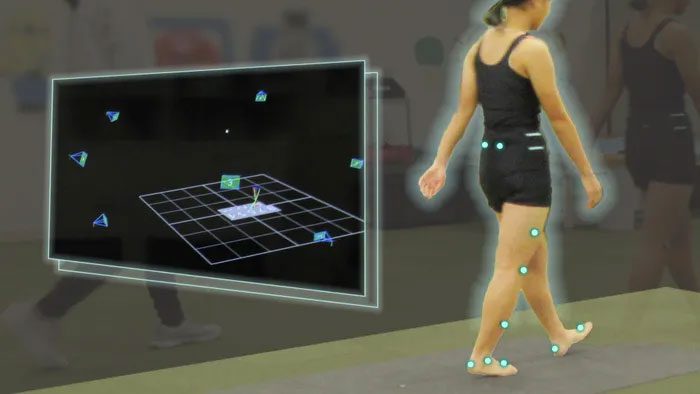A recent study has discovered that the way Japanese children walk, or their gait, develops differently compared to children in other countries.
Gait is a complex form of movement, unconscious yet crucial for most daily activities. It involves a range of movements associated with the hips, knees, and feet.

Researchers analyzed 3D gait data recorded through several markers attached to the legs. (Photo: Tadashi Ito, Reiko Matsushita).
A person’s gait is very important in measuring their quality of life and health status from a medical perspective. To assist in treating individuals with movement disorders, researchers are striving to understand the forces associated with gait. However, data on gait parameters related to age in children is scarce in Japan.
Two experts, Tadashi Ito and Hideshi Sugiura from the Department of Health Science at Nagoya University, along with Koji Noritake and Nobuhiko Ochi from the Mikawa Aoitori Medical and Rehabilitation Center in Aichi Prefecture, have identified the standard gait of Japanese children. They studied age-related differences in leg movements while walking using a 3D gait analysis system.
The research published in the journal Scientific Reports found that the recorded gait of Japanese elementary school students varied by age. While typical Japanese children aged 6 to 12 have gait and gait parameters comparable to children in other developed countries, their gait diverges as they grow older.
Dr. Ito and his colleagues identified four significant differences between age groups.
- First, there is an increase in cadence, or the number of steps taken per minute, in the group of children aged 11 to 12 compared to those aged 6 to 8.
- The second point is a decrease in the number of steps and stride length in children aged 11 to 12 compared to those aged 9 to 10.
- Next, children aged 11 to 12 exhibit less knee movement during the gait cycle.
- Finally, as children mature, there is a noticeable increase in the height of foot movement.
Dr. Ito stated: “We believe that differences in lifestyle, development, and cultural factors all influence the gait of Japanese children. This is unlikely to affect their health, but it indicates characteristics that differ from children in other countries. These results provide an important tool for assessing normal and pathological gait. At the same time, it can help determine the effectiveness of orthopedic and rehabilitation treatments for gait disorders.”





















































